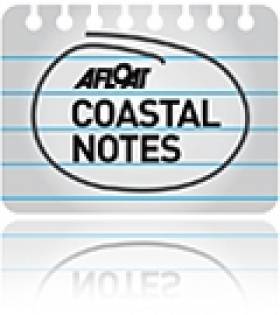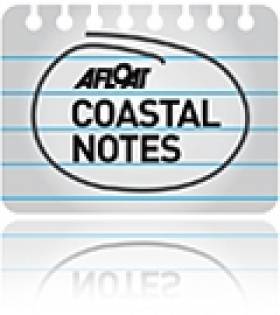Displaying items by tag: Oil & Gas
#Oil&Gas - The Government is redoubling efforts to survey Ireland's coastal waters for new and exploitable oil and gas resources – and determine their impact on the ecosystem and protected marine wildlife.
As TheJournal.ie reports, the pronouncement by Minster of State for Natural Resources Joe McHugh at this year's Atlantic Ireland Conference means that the "very significant" momentum of the State's licensing of offshore seismic surveys will continue.
At the same time, the minister says his department is teaming with the National Parks and Wildlife Service to collect new data on marine wildlife in Ireland's coastal waters with a view to mitigating the impact of petroleum exploration on protected species such as whales and dolphins.
Only two months ago the Irish Whale and Dolphin Group proposed a restriction on seismic surveys on the edge of the continental shelf to avoid disturbance to migrating blue whales and fin whales.
TheJournal.ie has more on the story HERE.
Spanish Point Survey Key To Future Of Oil & Gas Prospect
#Oil&Gas - Offshore reports on Dolphin Geophysical's current 3D seismic survey at Spanish Point South in the Northern Porcupine Basin.
As previously reported on Afloat.ie, the survey is expected to continue till mid to late September. It will investigate the Upper Jurassic and Lower Cretaceous reservoir intervals, which previously tested for gas condensate, and oil from the Spanish Point and Burren discoveries.
“We believe that the key risk is reservoir quality, rather than hydrocarbon presence," says John O'Sullivan, technical director with licence partner Providence Resources, "and so we consider that modern high-quality 3D seismic imaging will be a significant tool in reservoir prediction.”
Offshore has more on this story HERE.
#Energy - 'Fire ice' beneath the deep ocean off the UK and Irish coasts could prove one solution to our future energy needs - but tapping them will prove difficult for now, as the Guardian reports.
Reserves of methane hydrate crystals beneath the North Atlantic are said to be "enormous" - more than all the world's traditional fossil fuels combined - and potentially exploitable, according to geo-chemist Dr Chris Rochelle.
However, any such deposits are going to be difficult to access, being in deep waters far from shore - compared to Japan, where methane hydrates closer to that country's mainland have already been successfully converted to natural gas.
The Guardian has more on the story HERE.
#Oil&Gas - The public consultation on the first stage of environmental assessment for developing an oil and gas licensing framework in Northern Ireland's inland waters continues till next Friday 14 June.
The 'Scoping Report' was issued on 24 April last by Northern Ireland's Department of Enterprise, Trade and Investment (DETI) and marks the first step of the EU-mandated Strategic Environmental Assessment (SEA) process.
The current consultation seeks comments on the appropriateness of the proposed scope of the SEA and the proposed assessment methodology.
Anti-fracking campaigners Good Energies Alliance Ireland (GEAI) argue that any future oil and gas exploration or extraction in Belfast Lough or Larne Lough would include horizontal drilling and franking.
With one week left to go, GEAI is among those urging the public to have their say in the consultation, citing the 1,300 submissions received by the EPA that the group claims it encouraged on a proposed franking research study.
Northern Ireland has four existing petroleum licences across three main areas of exploration in Antrim, Fermanagh and Derry.



























































